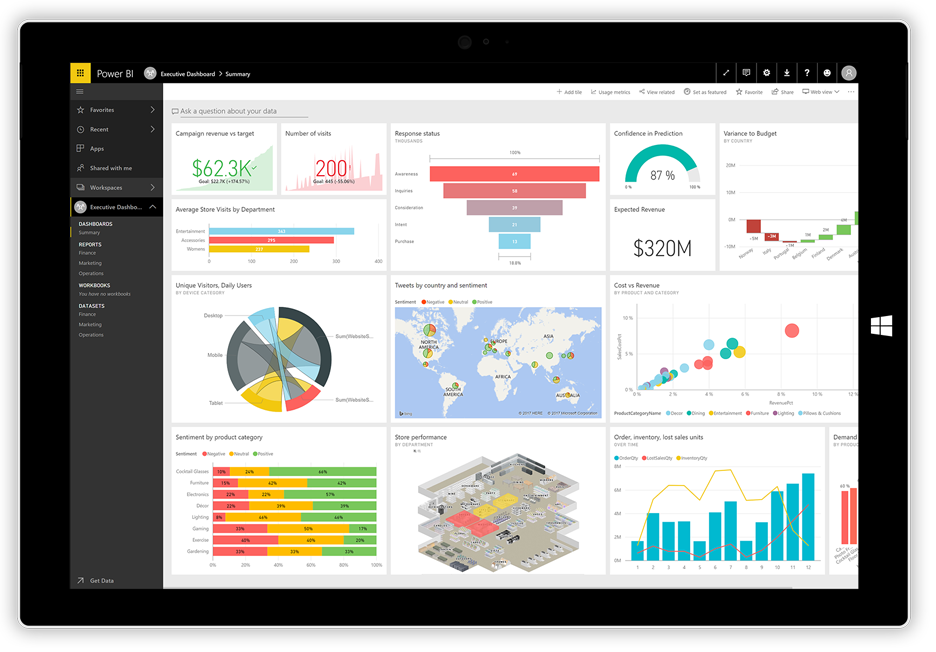Blog
How data analysis can help businesses, and which is the best tool

Introduction
It is widely accepted that nowadays, businesses have access to an infinite amount of data points harvested on the internet by various channels. But converting that data into actionable insights is much more challenging than it seems. Often statistics or isolated numbers convey only half the truth and they describe only what is happening not why it is happening.
One can only decode people’s behaviour and true motives by looking at the bigger picture through different perspectives or lenses and that is where big data enters the play. Someone, for example, may notice that monthly sales have increased but if he looks harder, he may notice that a lot of new people are purchasing a product but few of them are actually making repetitive purchases, something that will eventually cause problems. Hence, we can see that a mere number -monthly sales - cannot accurately describe the complex and competitive environment in which companies operate.
Cassie Kozyrkov, former Chief Decision Intelligence Engineer at Google, explained that ‘’data science is the discipline of making data useful’’. Data is considered ‘’useful’’ only if it influences behaviour and actions that affect the world around us.
As a result, data analysts should go over data and check what information may be important for further analysis – this is called data mining. As business decisions are basically predictions with incomplete information about what will happen in the future and how consumers will behave, the more information you have the more accurately you can predict how the future will unfold. Therefore, it is essential that businesses start collecting as much information as possible about consumers and the environment they operate (while respecting privacy in the meantime). There are numerous case studies that demonstrate how companies have used harvested data in order to increase sales, create better and more personalised experiences and target the most pertinent audiences.
More case studies around Data analysis
For instance, Netflix uses statistics to understand individual experiences and then it aggregates those experiences to identify trends across the community. Then those trends are used in order to create tailored suggestions to viewers about what to see next. In essence, gathering data on customers can help build personalised experiences by matching purchasing habits of other customers.
On the same note, Burberry, as an effort of its digital transformation, is encouraging customers to share data by using reward and loyalty programs. This valuable customer data is then used to offer tailored recommendations. In store, sales associates use tablets to give shoppers personalised suggestions based on their purchase history and social media habits. For example, if Burberry knows that you bought a particular handbag recently, then in-store assistants could show you a coat that has proven popular with other buyers of the same handbag. A year after this initiative, Burberry announced a 50% increase in repetitive purchase in 2021.
Many digital channels offer quick and easy ways to collect data like social media, google analytics, customer surveys etc. In addition, there are numerous tools that can enable you to analyse data thoroughly, perform elaborated functions and shape information as you see fit.
Microsoft Power BI
One of the best tools out there is Power BI which is designed by Microsoft and is considered one of the best and most user-friendly business analytics platforms on the market. Power BI is very secure, it is hosted on the cloud and it enables users to view customized reports and dashboards. It also provides hundreds of different data visualizations, built-in artificial intelligence capabilities and tight Excel integration. Power BI is trusted by Adobe and Heathrow Airport for their data analysis. By choosing Power BI, companies can dig deeper into their gathered data, sort it any way they see fit and cross check results. In addition, they can easily create complex functions that further analyse existing data, revealing hidden paths and insights. Lastly, with Power BI functionality, businesses can create reports with data updated in real time in order to make decisions based on the latest data available.

